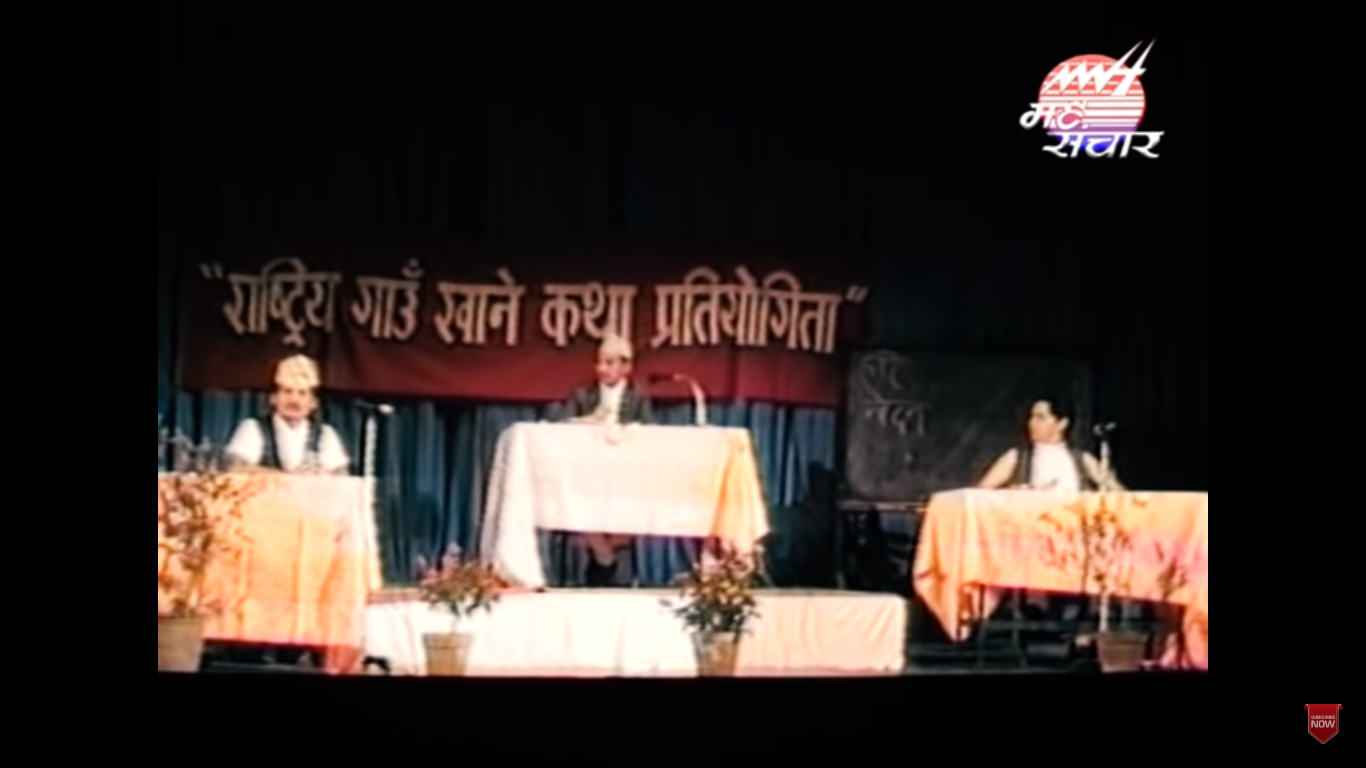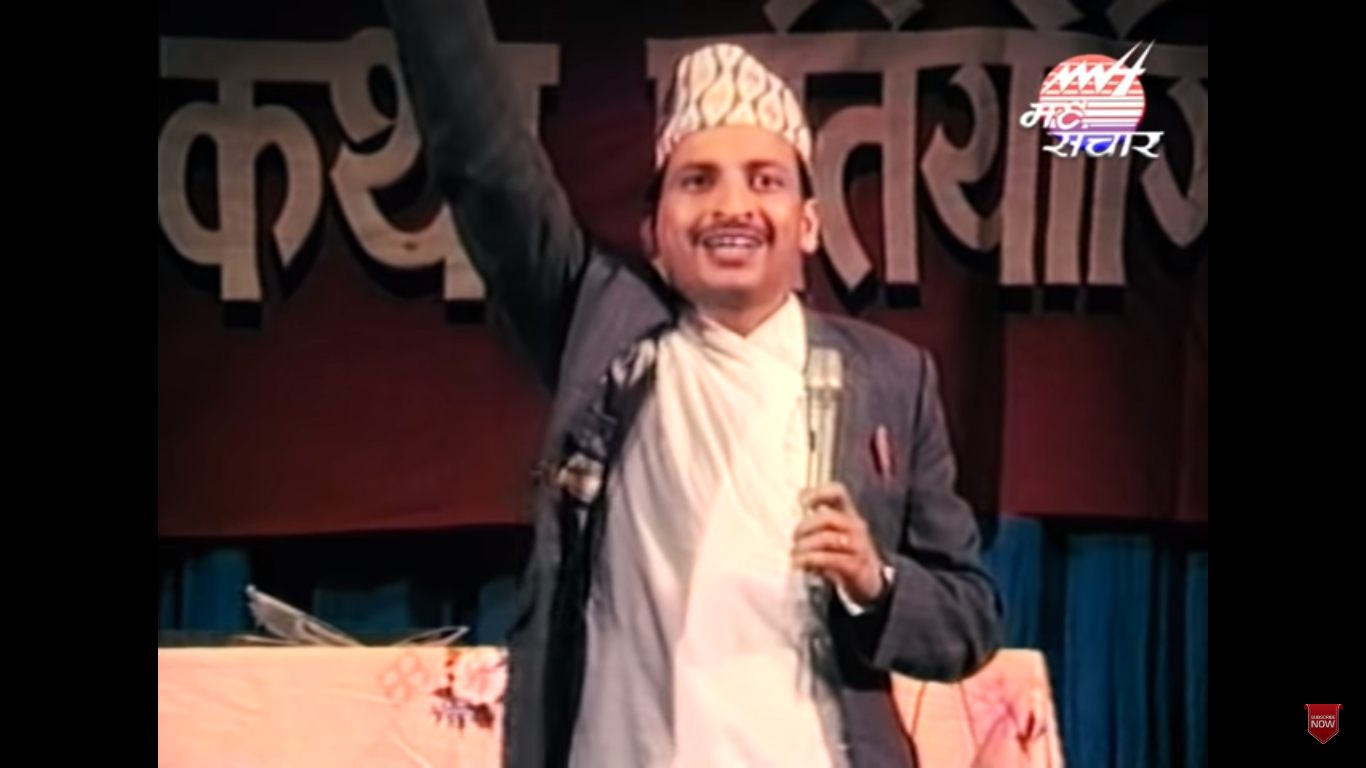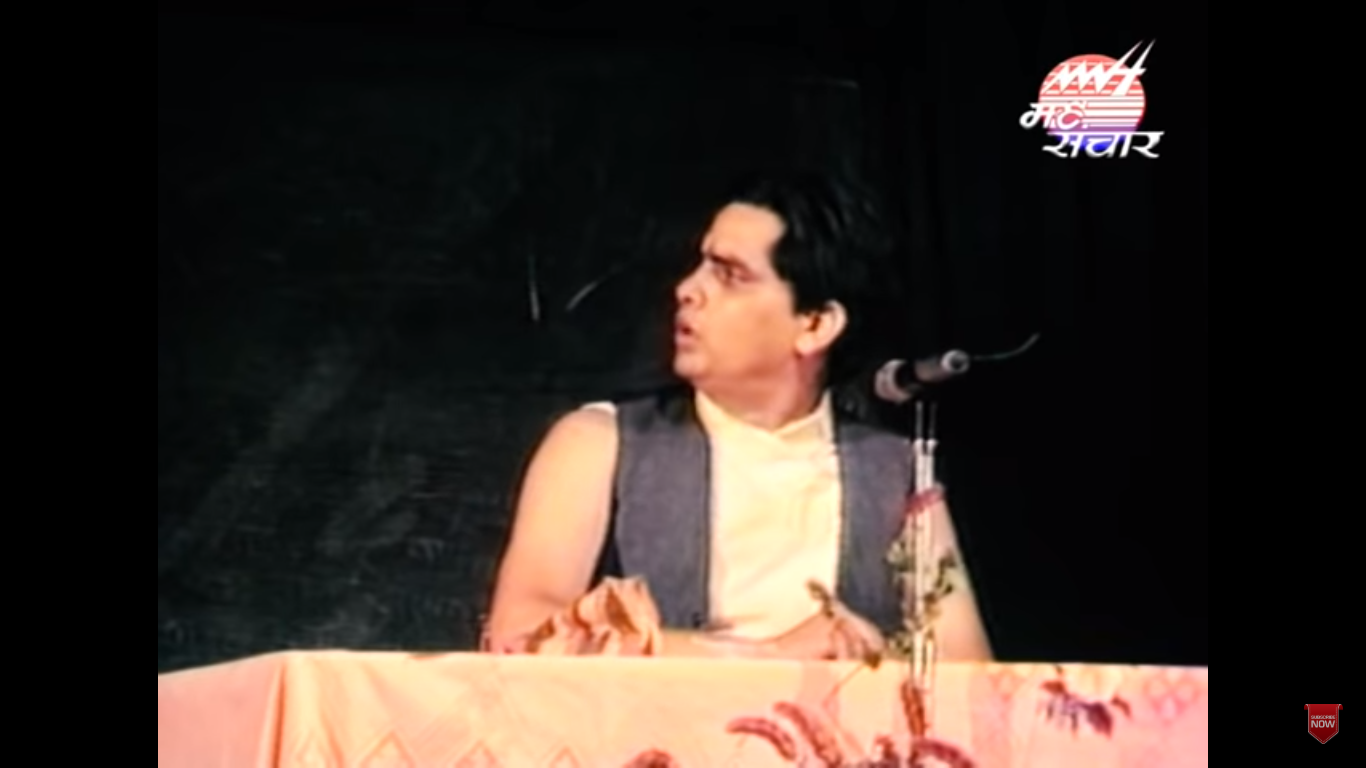
Audaciously humorous, contemporarily relatable
A satirical stage show performed in the late 1980s, MaHa’s Gaun Khane Katha part 1 is a timeless performance by the legendary duo along with ever-charming Raja Ram Paudel. In the 37 minutes, the play satires national and international politics, the socio-cultural context of that time, bureaucracy, development planning, media, nepotism, and whatnot.
‘Not-so-spoiling’ summary
Gaun Khane Katha, which means riddles in English (but literally translates to ‘the stories that devours a village’), presents a kayfabe national riddle competition between Hari Krishna Shrestha (Acharya) and Madan Bansha Acharya (Shrestha) officiate by the umpire (Paudel). (You see what they did there, don’t you?)
The plot of the drama is simple: the participants ask each other a riddle and each gets 10 points for the right answer or if the opponent could not answer one. Moreover, a participant has to hand over a village to the other if he fails to answer. But the participants also agree to give each other administrative units instead of villages.
Nepal, during that time, was facing an economic blockade sanctioned by India. Thus the winner of the competition would win a tank full of petrol, while the loser would get 1,000 tola (1 tola is equivalent to 11.66 grams) of salt, both of which were scarce at that time. And since the play was staged during the much strict Panchayat time when the freedom of speech was suppressed, the MaHa’s choices of words sounds very prudent but pregnant with meanings.
The characters
All three characters are well-built and equally important. The umpire is a representative of the authoritative power who hosts and officiates the competition and holds the right to give extra points or deduce them as he pleases. Shrestha’s Madan Bansha Acharya character is witty in terms of the riddle, but more importantly in terms of buttering up the umpire, which benefits him a lot. Whereas Acharya’s Hari Krishna Shrestha is equally creative with the riddles, but a lack of humility towards the umpire means he gets punished more often.
The play is well written that it engages the audience from the beginning to the end. All the actors give their best performances with their body language, timing, and delivery. It was the early days for MaHa and Paudel, and the play must have certainly helped them establish the legacy they have in the Nepali comedy industry.
Relatability is the strength
Over 30 years on, Nepal has seen various social and cultural changes. But the satire performance is relatable in terms of the taken-for-granted attitudes of politicians as well as the commoners. The situation then, as one can imagine from watching the drama, was a mess because of the political actors of that time who had a chance to establish a well-functioning system but did not. The same can be said now as Nepal not to get rid of the mess yet. The play voices discontent of people towards the Panchayat system around a year before the democratic system was reestablished from the People’s Movement 1990. And, as Acharya and Shrestha were active to deliver such messages to the public during those times and thereafter, the play may have an important role in sparking the movement.
Conclusion
What one may wish had been better about the play is the quality of the audio and video. The video was probably shot with a single camera, probably a handheld one. And while the audio is clear, there are moments when the laughter of the audience overshadows a few jokes. But it is still remarkable that the technology was used in the best way, even when it was so limited at that time, and therefore it is not worth complaining.
The only drawback of the video is it is incomplete. You cannot know how the drama concludes. But the intent of the play was never to conclude who wins or who loses but to deliver a strong message to the mass public and surely it was successful.
You can watch the video here:



Comments
Post a Comment